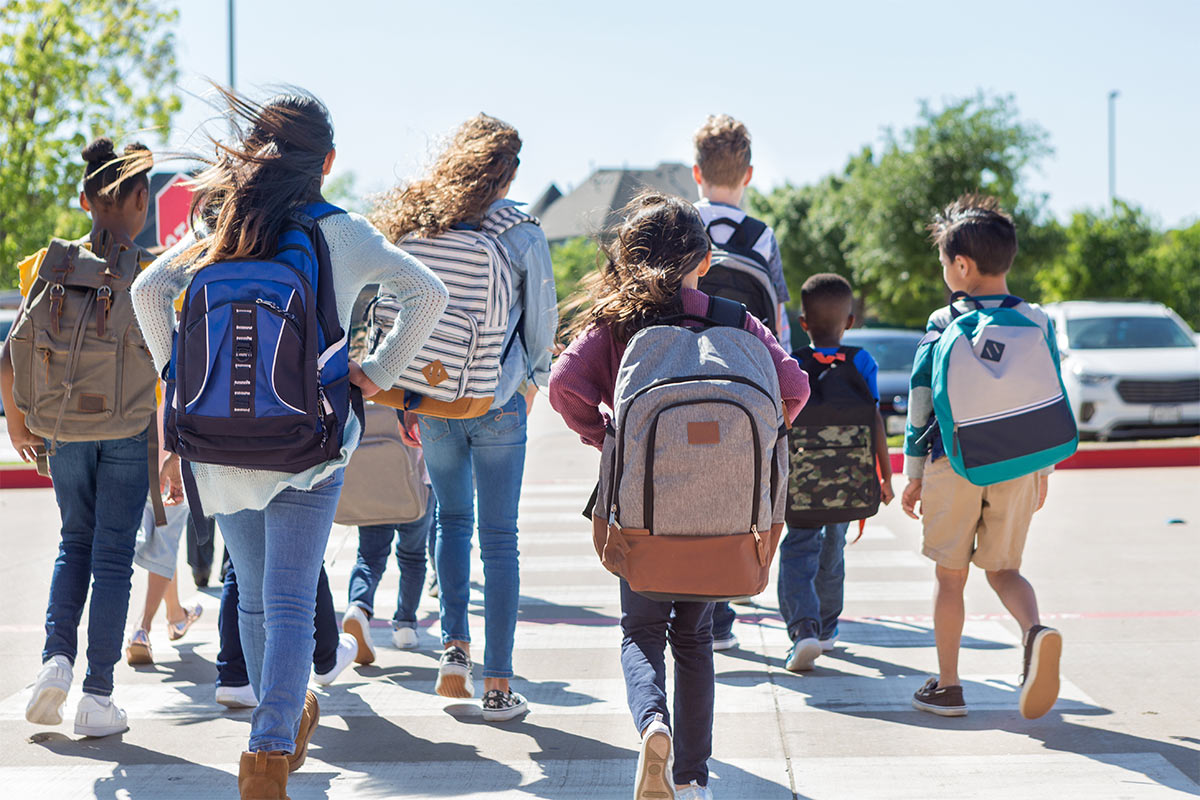With such benefits in mind and just in time for National Walk to School Day on Oct. 5, Chico Unified School District is launching a pilot Walking School Bus program — an initiative that promotes safe routes to school, often chaperoned by school personnel, or parent and community volunteers.
Districts throughout California are partnering with local municipalities, community organizations and agencies to promote and operate safe walking programs. For example, Monterey Peninsula USD works with Transportation Agency for Monterey County, while Santa Monica-Malibu USD partners with the City of Santa Monica.
In Chico, the work began when Enloe Medical Center and the Butte County Health Department contacted the district about starting a pilot program at one elementary school. Mike Allen, principal of Chapman Elementary School, jumped at the opportunity.
“We’re still in our early stages, but I think it will be just a huge asset to the school. It allows folks to have a little more freedom to get their kids to school by giving them another option, and it’s a healthy, safe option with parents,” Allen said. “And hopefully, as a byproduct, people will drive safer around school seeing the orange vests, and the kids walking and in a big group. So, I’m hoping that the benefit of it is all the little things add up to a lot of benefit for our students and our families.”

Focusing on a few central hubs — apartment complexes and duplexes where higher numbers of students live — Allen said being able to see the paths, conditions of sidewalks crosswalks and streetlights, where chaperones could meet kids, and how long the trip would take was “very insightful.”
“I’m all about community, and I think in the long run, something like this strengthens communities,” he said, noting the added convenience it will provide for single working parents and families that need to drop children off at multiple school sites each morning. But it’s more than that.
“Just walking the audit today, you see more than you ever see when you’re in your car driving,” Allen continued. “Getting out and walking to school instead of driving helps, especially the young kids, feel a closer connection to their community, where they live. There’s a lot of different things that kids experience along the way.”
Moving forward, he said, the school will be conducting outreach among families and local community groups to find volunteer chaperones.
The community-building aspect is a huge bonus for Chico USD board President Kathleen Kaiser, who recalls her own experience as a first grader walking to the school bus stop and waiting around, meeting some of her neighbors for the first time.
“After that, everybody knew each other — knew who went to school and what grade they were in, and then people were playing together,” she said. “I do think there’s a strong community-building aspect to actually doing that routine together. That would be my hope, that besides the benefit to them being to school on time, that they would have that support structure.”
Some of the dozen elementary schools in Chico USD cover regions in which walking to school wouldn’t make sense, Kaiser said. But should the district decide to expand the program beyond Chapman Elementary to campuses in similar neighborhoods, she said officials will look at whether peer interactions improved and if overall attendance and on-time attendance in particular increased. “That’s a really critical aspect — kids can’t learn if they’re not there,” Kaiser said.